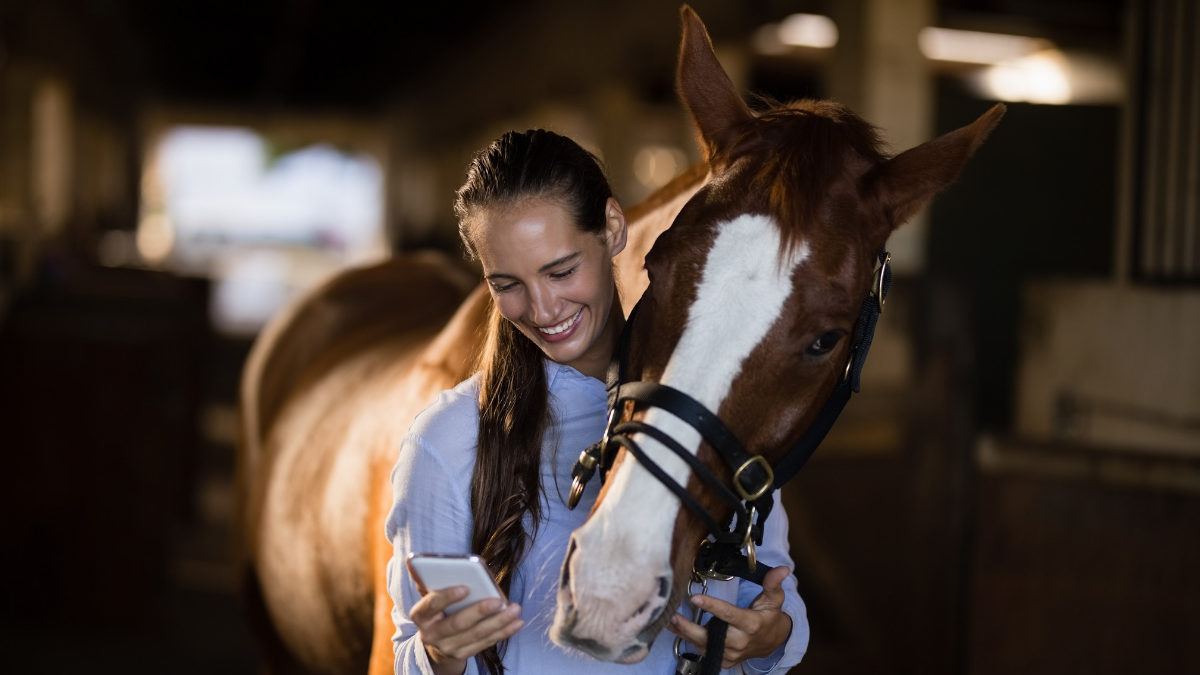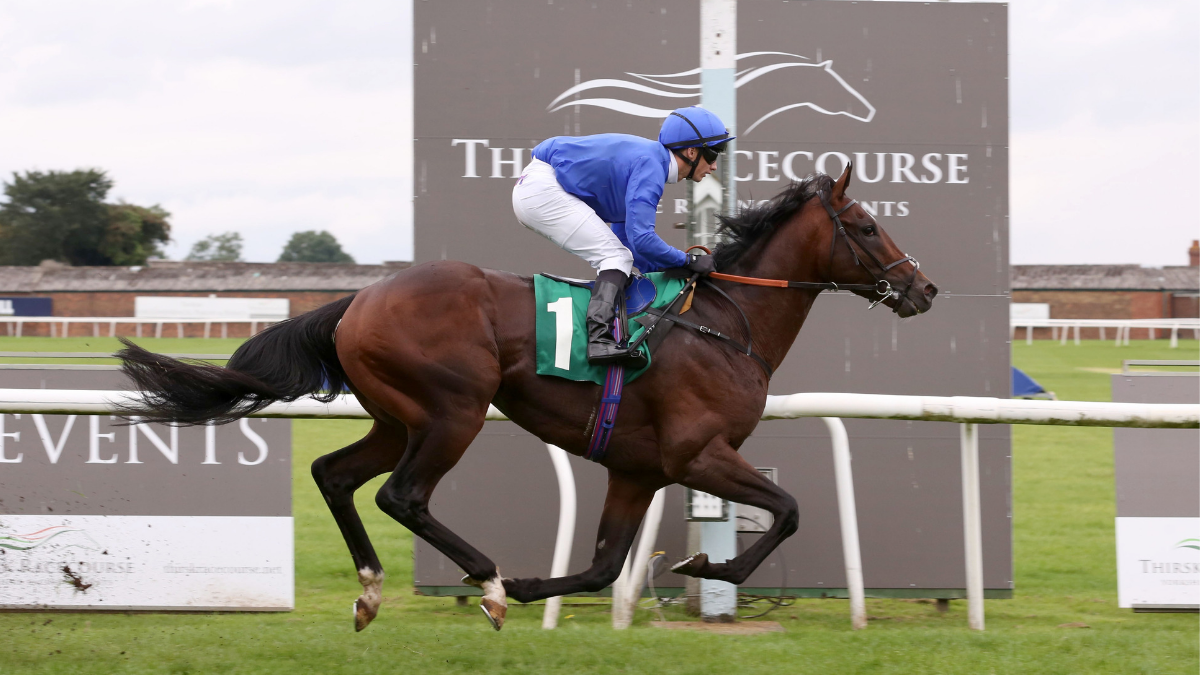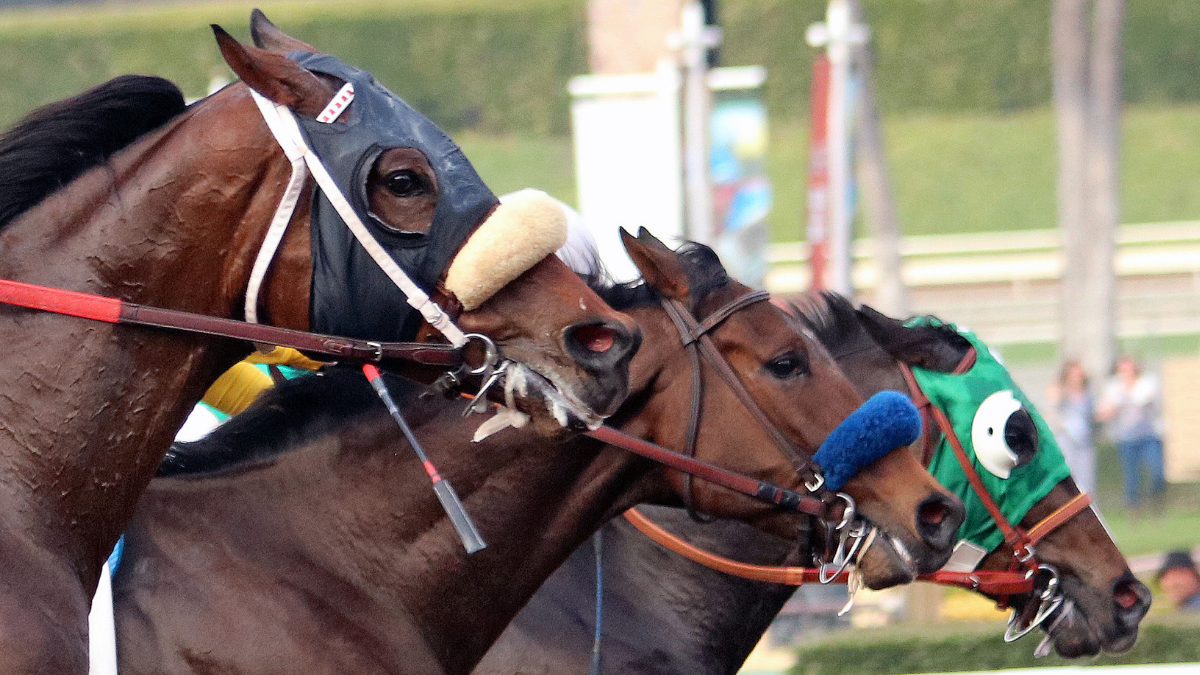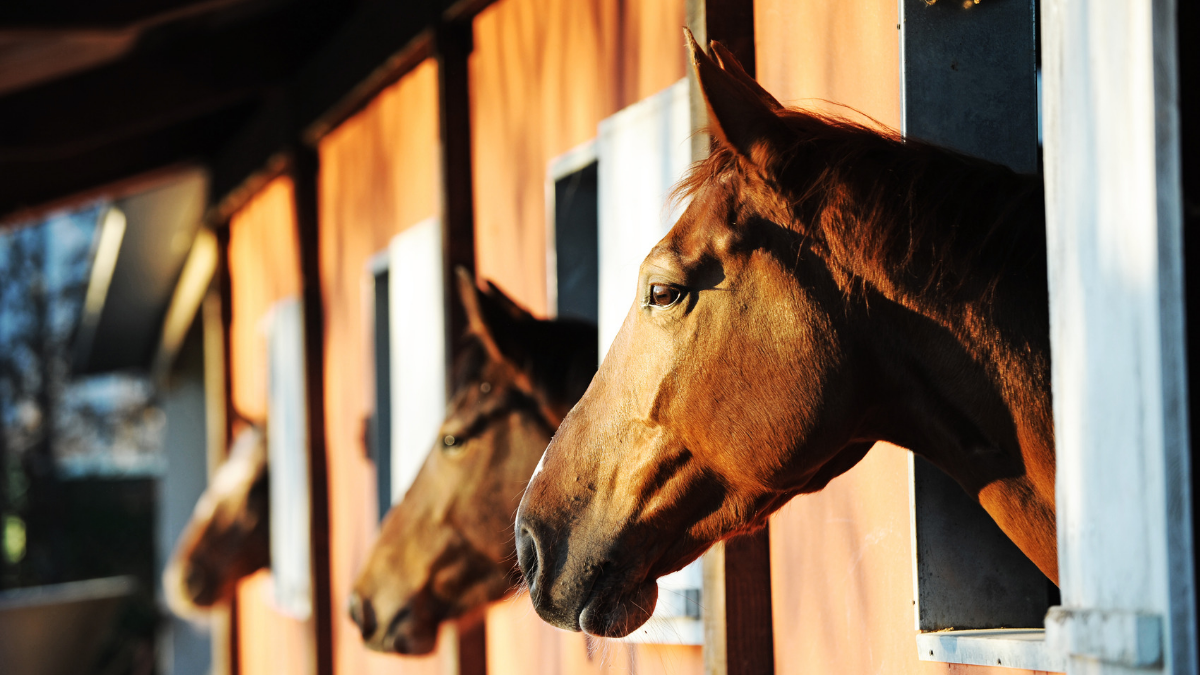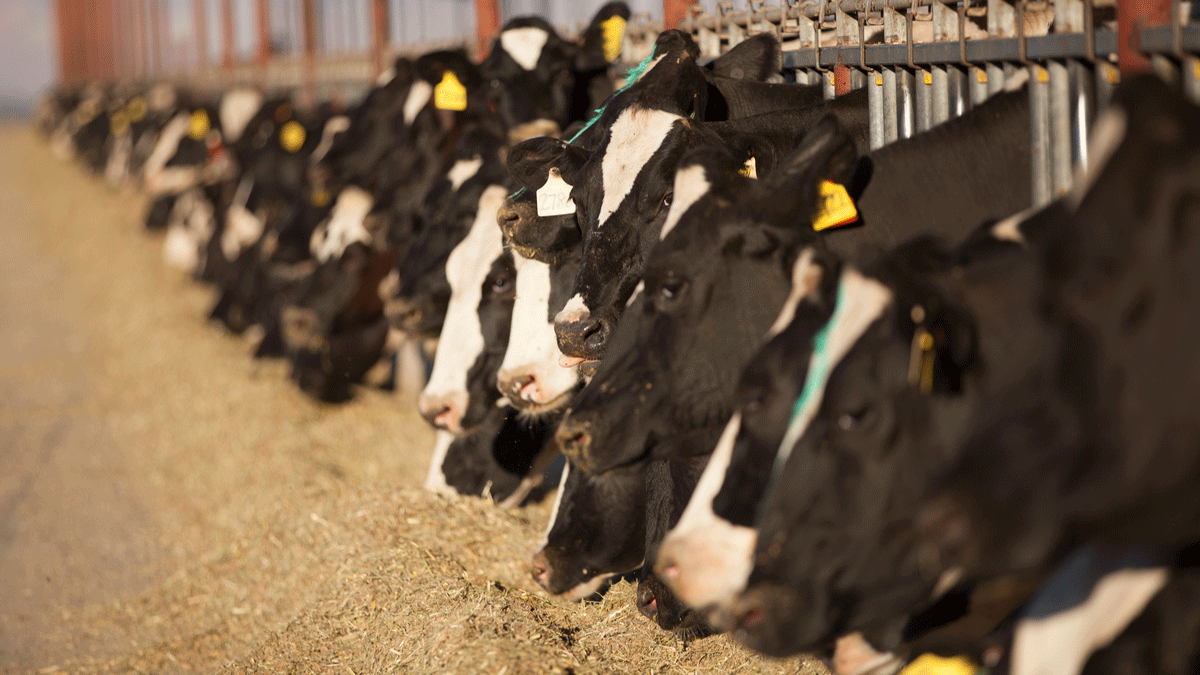The below is an edited transcript of Tom Martin's interview with John Phillips of Darby Dan Farm. Click below to hear the full interview:
Tom: John Phillips is a third-generation horseman who owns and operates Darby Dan Farm, which was originally founded by his grandfather. Darby Dan is among the iconic Thoroughbred farms of Lexington, Kentucky, and the Bluegrass region. John also manages the family- owned Phillips Racing Partnership. Thank you for being with us, John.
John: It's a pleasure to be here. Thanks, Tom.
Tom: I'd like to get started with an interesting article I read about you that appears on the website of Vanderbilt Law School, your alma mater. It talks about your decision to leave the practice of law because of your distaste for and fatigue from the mad chase for billable hours that was accelerating at the time. So, you agreed to take on the leadership of the family farm with the mission of guiding this gentile country gentlemen's pastime into the world of global competition, high financial stakes and huge risks of business failure. It sounds like the challenge is a big law case — but on horseback. Do they differ in important ways, or are they quite the same?
John: Well, they differ in some ways, and they're similar in some ways. They're different in the sense that, in law, you're worrying about somebody else's problem — you’re trying to resolve somebody else's problem. With horses and the horse farm, they're your own problem. That makes it really different.
Psychologically, for me, it's much more satisfying. I love the law, but it was much more satisfying to see tangible results of my efforts. That was fundamentally a difference — one that, to me, was just more fulfilling. Having said that, the legal education was absolutely valuable and is very much a part of my process day to day with how I define and analyze problems. I have to thank my legal education and my ten years of legal practice for allowing us to apply those skills in a day-to-day world on a horse farm and in racing and rearing horses of the magnitude that we do.
Tom: I was wondering if that grounding in law informs what you do now. Can you give me an example, perhaps, of how you use what you learned about analysis or critical thinking?
John: Well, in law, you start with facts, you find the issue and then you analyze that issue. It's no different for many other problems that you face. I'm sure economists would have their approach to a problem as well. It’s a global business now and, as you noted, we have constant challenges to apply law to what we produce. The fact of the matter is we have syndicate agreements. They have become very sophisticated. When my grandfather did a syndicate agreement on Hail to Reason literally decades ago, it was a two-and-a-half-page document.
Now, a syndicate agreement for a stallion is 30 pages. There are all kinds of nuances within that document, and that degree of sophistication within the industry has required the application of law, so much that it has been really helpful, not only in the stallion range, but in boarding contracts and sales relationships. There is a lot at stake now. It's not that gentile practice that it used to be in my grandfather's world; it's really intense global competition, and you better protect your backside and understand the legal ramifications of what you do, because there is a lot at stake.
Tom: Not only does Darby Dan have an extensive record of racing successes — a couple of Kentucky Derby winners, several grade-one performers, a British Cup winner — the farm has also repeatedly proven its success in breeding and the continued care of retired race horses. We’ll get into aftercare in just a minute, but has a guiding philosophy evolved that has contributed to the success of Darby Dan Farm?
John: I was reflecting back on the family's success — not only in Thoroughbred racing, but we have been very fortunate but in all of our sports activities. Upon reflecting on the opportunity to apply certain basic principles of life to the Thoroughbred horse racing — we owned the Pittsburgh Pirates for 35 years as well — and they basically distill down to three concepts. Those are being able to work with people — to respect people of any standing — and having a passion for what you do [and courage].
If you really are passionate about something, that’s never work. It's not something you have to do or need to do; it's something you enjoy doing. So, you can work very hard and still think it's extremely enjoyable. That's one of the differences that I had in law because that was work to me. Even though it was satisfying, I wasn't thrilled to come through the door every morning. I certainly get that thrill when I come onto the farm.
I think you also need courage. That is, you need to not be afraid to fail and try things.
I think, if you apply those basic principles — which we use in horse racing and baseball, and there are some great anecdotes in each of those instances that I could give you — but if you apply those basic principles of life, then you'll be, I think, surprised that success can follow.
It's hard to explain why you could have successful business raising Thoroughbreds and the success in baseball that we had. We won three world championships. So, if you look at that, what are those basic themes? Really, there were the three principles of people, passion and courage.
Tom: I'm tempted to ask you for one those anecdotes. Is there a nutshell-sized one that you've used?
John: Well, yes. We talked about the respect for people. I think there are two really neat examples of that. Pittsburgh Pirates acquired the services of a young player from Puerto Rico who could barely speak English. He was really a talent, but he was struggling. The family embraced him, and he became a dear friend of the family. Ultimately, with that increased confidence and feeling of respect that he had from the organization and from the ownership, he flowered into one of the greatest baseball players of all time. That was Roberto Clemente.
This is the second anecdote: When the family sold the Pirates in 1984, a reporter asked him about the sale, and my uncle said, “Well, we've sold for just enough to pay for the debt on the team.” The reporter was a little incredulous, and he said, "You mean to tell me, after 30 years, you haven't really made any money?" Uncle Dan, in his classic way, said, "You have missed the point entirely. For 30 years, we've had the best seat in the house." That was kind of our attitude — you go for it and you enjoy the process, not necessarily the destination. If you like the process because you're passionate about the process, then good things will happen in the end.
Those are a couple of experiences that we have had in the family that, quite frankly, have just been very fortunate.
Tom: That's a great story. [The experience] is the value, isn't it?
John: It is.
Tom: In an article I read by BloodHorse Magazine, you talked about your reasons for joining the Water, Hay, Oats Alliance. This is not an organization that we'd consider a household name. First of all, what is that, and then, if you could share those reasons with us.
John: Thoroughbred horse racing is challenged right now. The society's values are different than they were in my parent's or grandparent's day. Their attitudes are different, and horse racing is not a sport to change quickly and easily — but it's a sport that, if we're going to survive, we have to change.
There are certain fundamental contexts that require the sport of horse racing to change. Integrity of racing has always been one of them. Of course, as with human sports, the issue of doping, of medicines that enhance performance, have always been an issue. It’s gotten so much more sophisticated and it is so much more complicated now. It is also so much more transparent than it ever has been before. The doping topic, from the Olympics to everyday basketball, has become a keynote. It's no different in horse racing.
The Hay, Oats, Water Alliance was essentially an idea to centralize the issue of drug standards within the industry through the federal government. Right now, it's very hard for the industry to do much of anything because it has 30-some jurisdictions that are all in control. They all have different penalties and different standards. While we've tried for the last 20 years to have uniform medication, if you will, we have not been very successful. This was an approach just to take that one issue and put it in the hands of an independent regulatory body. It’s the same body that oversees the Olympics.
We were asking the states to yield their control over that one particular issue for the purpose of uniformity of standards, testing and penalties. Doping is one of the underbellies of Thoroughbred racing. It has been for many years. The problem is that, now, I don't think we have the luxury that we used to have. Sports are changing radically — the competition and, quite frankly, now, sports betting. It's going to be intense. If you give the general public an excuse not to pursue their interest in your sport, they will take that, and they will exit from the game. So, that is one of them.
Tom: Has that been happening?
John: Yes. The fact of the matter is that, in 2011, the U.S. Jockey Club did research with the McKenzie Group out of Atlanta, a nationally recognized research company. Unfortunately, we're losing about 5 percent of our fan base a year, and that's too much. That will lead us into obscurity if we let it.
Now, there are a lot more reasons than the integrity issue. We have some things that are no longer acceptable to the public. One of them is the aftercare of Thoroughbred race horses. That is an extremely sensitive topic, particularly with millennials now, but it's always been a sensitive topic. There is also the relationship between men and horses, which is just different from what it was a century ago or 50 years ago.
At the end of the Thoroughbred racehorse's career, what happens to them next is a factor for people not following the sport, and it's a factor for people who exit the sport. It has to be addressed.
Then there are other things that come down to the use of a stick. That has just an adverse impression, and it's a little different than it was 100 years ago because-
Tom: What does that mean?
John: The whip. There are those kinds of issues. People don't ride horses like they used to, and they are not familiar with our relationship with the horse. Those kinds of sensitivities need to be addressed and need to be addressed directly if the sport is going to survive. I mean, there are a lot of good qualities there. It's an elegant sport. It's beautiful interaction between man and animal. I love it intensely. It has provided this environment around Lexington, Kentucky, that is breathtaking. But if we don't have the sport, the underpinnings of all of those activities — all of that employment, all of the things which, quite frankly, I'm able to enjoy and the 45 people that work on Darby Dan Farm are able to enjoy — they all rely on a viable sport. Those kinds of issues were a matter for my perspective protecting the sport.
Tom: Let's come back to aftercare in just a minute, because I know that's really important to you. I just want to finish up on the search for a national, uniform medication policy. There is legislation that's been hanging out in the halls of Congress for a number of years now. It has not been successful so far, but it would establish a central authority that would create and implement a policy. Does it have a future? Do you think that, eventually, you will see a passage?
John: The operative word might be “eventually” there. It is a controversial piece of legislation, and it's known as the Horse Racing Integrity Act. The reason it's controversial is because, in part, because it's a turf war. It deals with the issue of Lasix, which is a highly controversial medication. It is a good medication in the sense that it's effective for its intended use. That intended use probably applies to about 16 percent of Thoroughbreds. It is a diuretic that inhibits pulmonary edemas. But 99 percent of the horses run on it. Because it’s a diuretic, the horse that's competing will lose somewhere in the neighborhood of eight to 16 pounds — I've heard different figures — but nobody wants to run without it because some of the horses run with it and, therefore, it's perceived as an advantage.
Unfortunately, the Horse Racing Integrity Act has gotten into that issue. Now, that issue of Lasix got pulled into it because of some political considerations. Whether or not the Horse Racing and Integrity Act has a future, I don't know. I mean, I'm pushing for it. I'm hoping for it. I know the U.S. Jockey Club is, but there are important groups that have problems with it because it's also handing over power and authority to an independent group that some people don't really want to yield to.
Tom: That has expanded into standardbred and quarter horse racing as well, right? In its latest iteration?
John: Well, it has had multiple iterations. Where it's going to land, I have no idea. I can tell you that the Thoroughbred industry has a lot of different considerations in, for example, the quarter horse industry. The quarter horse industry produces over three times the number of horses that the Thoroughbred industry does in the course of a year. Their approach to handling those kinds of issues is very different, and I suspect, at the end of the day, there will be no movement if it is expanded beyond the Thoroughbreds. We'll just have to see where it goes. I know our Congressman here, Andy Barr, has been working very hard at it, but interestingly enough, Churchill Downs is not; they're not very enthusiastic about it.
Tom: Interesting.
John: It's quite controversial, and it will take some work to get it passed.
Tom: We're almost out of time and I want to be sure to come back to something that I know is near and dear to your heart, and that is aftercare. If we can wrap up on that subject, I would say that you're an advocate for this issue. Let's pick up where we left off before we got into the implementation of the Congressional act. What is the need and what's going on that drives it?
John: Well, the 2011 study that I referred to indicates a real sensitivity in the public regarding what happens to the horse after his racing years are done. The Thoroughbred industry, unlike some other breeds, has been very aggressive about trying to address that. There are a lot of people who say that the horse is a companion animal and, therefore, has a higher standing than, say, livestock. That is really a discussion that we don't really need to have, because we do know that our current and future customer is very sensitive about what happens to the horse after his racing years are done.
We formulated, in 2011, the Thoroughbred Aftercare Alliance. The TAA was provided seed money by The Jockey Club, Keeneland and the Breeder's Cup to basically give accreditation to organizations and facilities that were caring for or retraining Thoroughbred race horses. It's not just retirement; it's the retraining process. In six years, we have done a fairly remarkable job bringing that point to the forefront, and the industry is no longer questioning the need for aftercare but, rather, how we can address and expand it, so that really conveys to the public that the Thoroughbred industry is serious about aftercare.
We now have 64 accredited organizations and 165 facilities that either have retired or retraining services, and that has translated into literally thousands of retired horses and thousands more that had been retrained in secondary careers.
It's extremely important, and we're doing a lot of research. We're expanding our funding base. We can generate about $4 million annually through the TAA. There are millions more that the individual organizations raise themselves, and we have a number of initiatives. The Stronach Group has been very helpful. They've created, along with AmTote, a computer application in their betting machines that allows players to contribute to the TAA. We just finished an assessment of Santa Anita, and that plan is going to contribute about $10,000 every quarter to the TAA.
Interestingly enough, that particular application is being distributed to all Stronach race tracks, plus Delmar. The NYRA just announced that they're going to have that app as well. The Jockey Club has increased or created a fee for the Report of Mares Bred, which basically will require stud managers to pay $35 for every mare that is bred to their stallion. Well, that's about 30,000 horses. The bulk of that money will go to the TAA. I could probably talk for hours about it.
Tom: Does it all boil down to these horses having a great retirement life?
John: Well, two things on that: yes and no. The Australians were under tremendous pressure — I'm going to use them as an example of where I'd like the Thoroughbred industry to end up in the United States — they were under tremendous pressure from their public as well. They created a policy or strategy called the First Exit from Racing Strategy. It basically says that racing is responsible for that horse when he exits from the race track, but it doesn't say that racing is responsible for that horse for the rest of his life. It’s like the strategy of a local Humane Society: you go to adopt the dog, and you're going to pay for shots. You have to make sure that the cat is neutered. I mean, it's a fairly elaborate process — it's not just, “Here is your cat.”
Thoroughbred racing is going to do the same thing, and they do that in Australia. When a horse exits from racing in Australia, they can tell you where that horse is, when it exited and, importantly, who was responsible for that horse's welfare upon exit. They monitor and guarantee that soft landing for what is about a two-year window. That’s where we need to get to in the United States, because that is practical and that is fair.
Beyond that, if little Suzie leaves for college and decides that her Thoroughbred is 18 years old and arthritic, and that horse ends up in bad circumstances, that's not really racing's fault. That's not good on Suzie, from my perspective, but that's not really racing's responsibility. We've got to get to the point where, when that horse leaves racing, wherever that horse lives in the United States, that it is assured of what I call a soft landing. That's an important point, and I think that will allow the Thoroughbred industry to manage that issue of unwanted horses that are in retirement or being retired from the racetrack.
Tom: John, we have about 30 seconds, and this is one of those think-fast questions, because I know you could probably go on for a long time answering it. What would you say, if you had to distill it down, that you most enjoy about this Thoroughbred business?
John: I enjoy every day. I really do. I don't know; I love animals and I love horses. To me, it's a holistic thing. Let me just say this: to me, it's a living art, and I am passionate about it. And because I love it — whether it's the equine art or the landscape art — to me, it's art. That gives me a quality of life for which I'm very blessed, because I just love it.
Tom: John Phillips of Darby Dan Farm and the Phillips Racing Partnership in Lexington. Thank you so much for joining us, John.
John: Thank you, Tom.
John Phillips spoke at ONE: The Alltech Ideas Conference in 2018. To find out more about ONE, returning May 19, 2019, click here.
